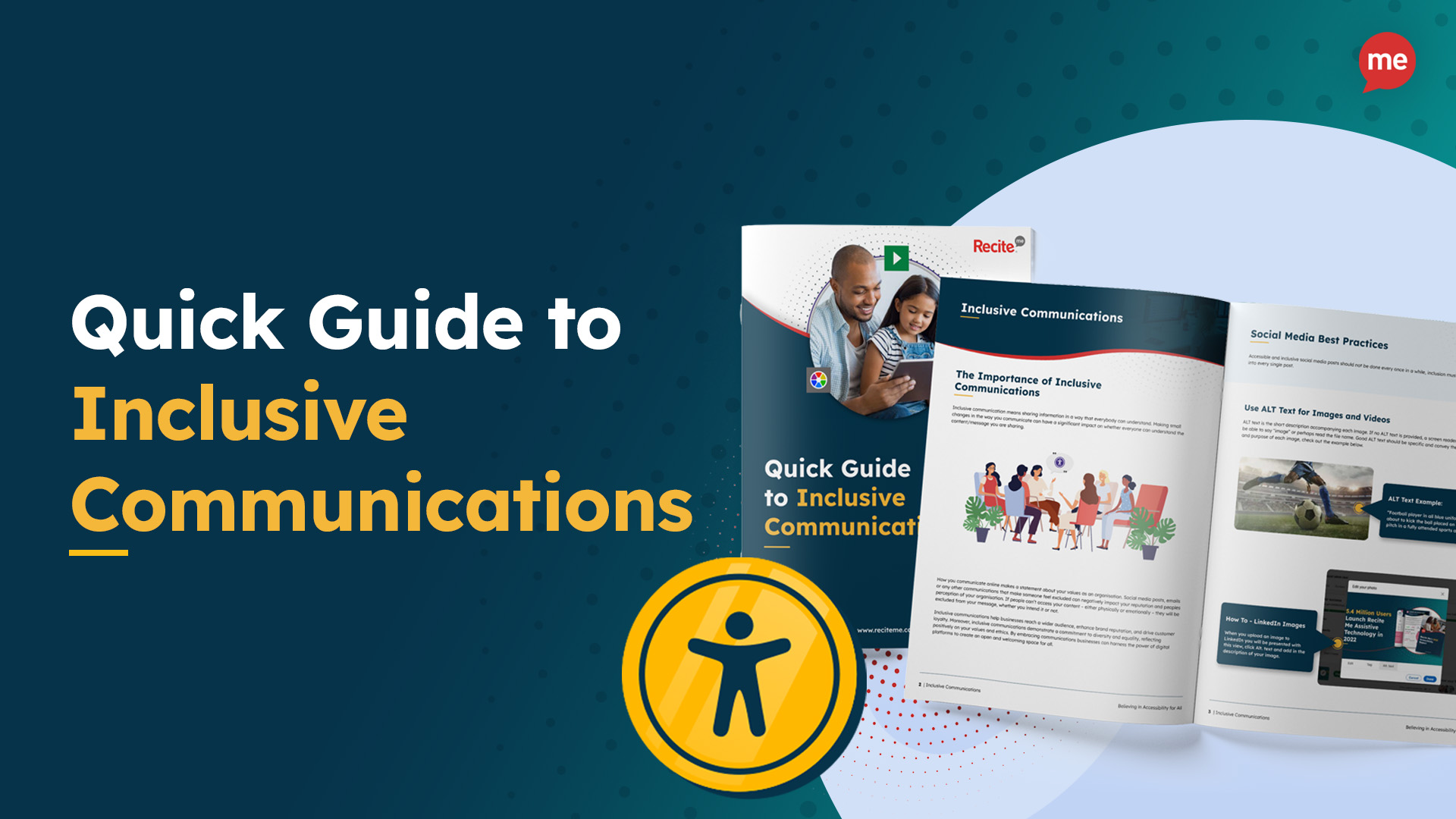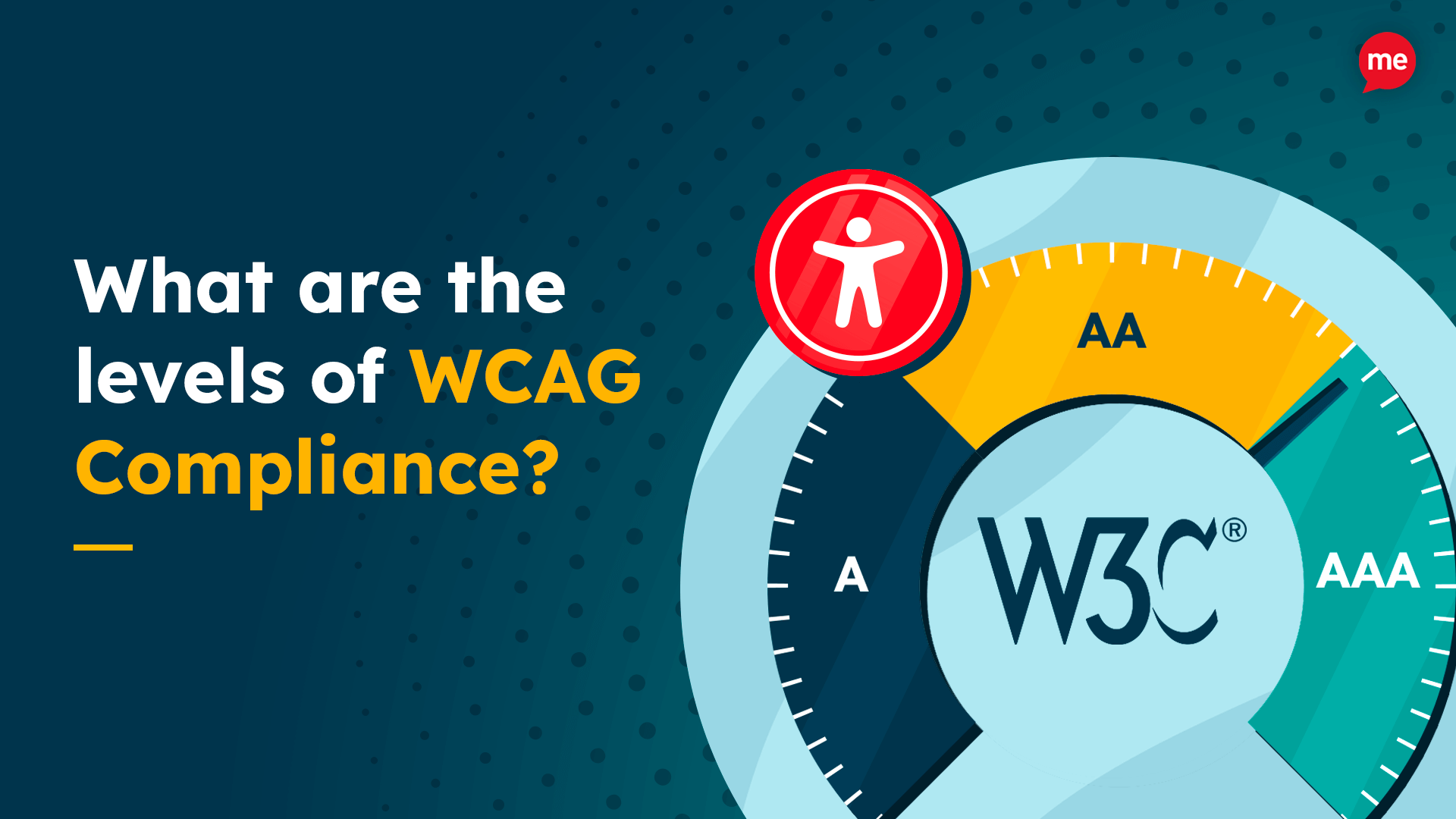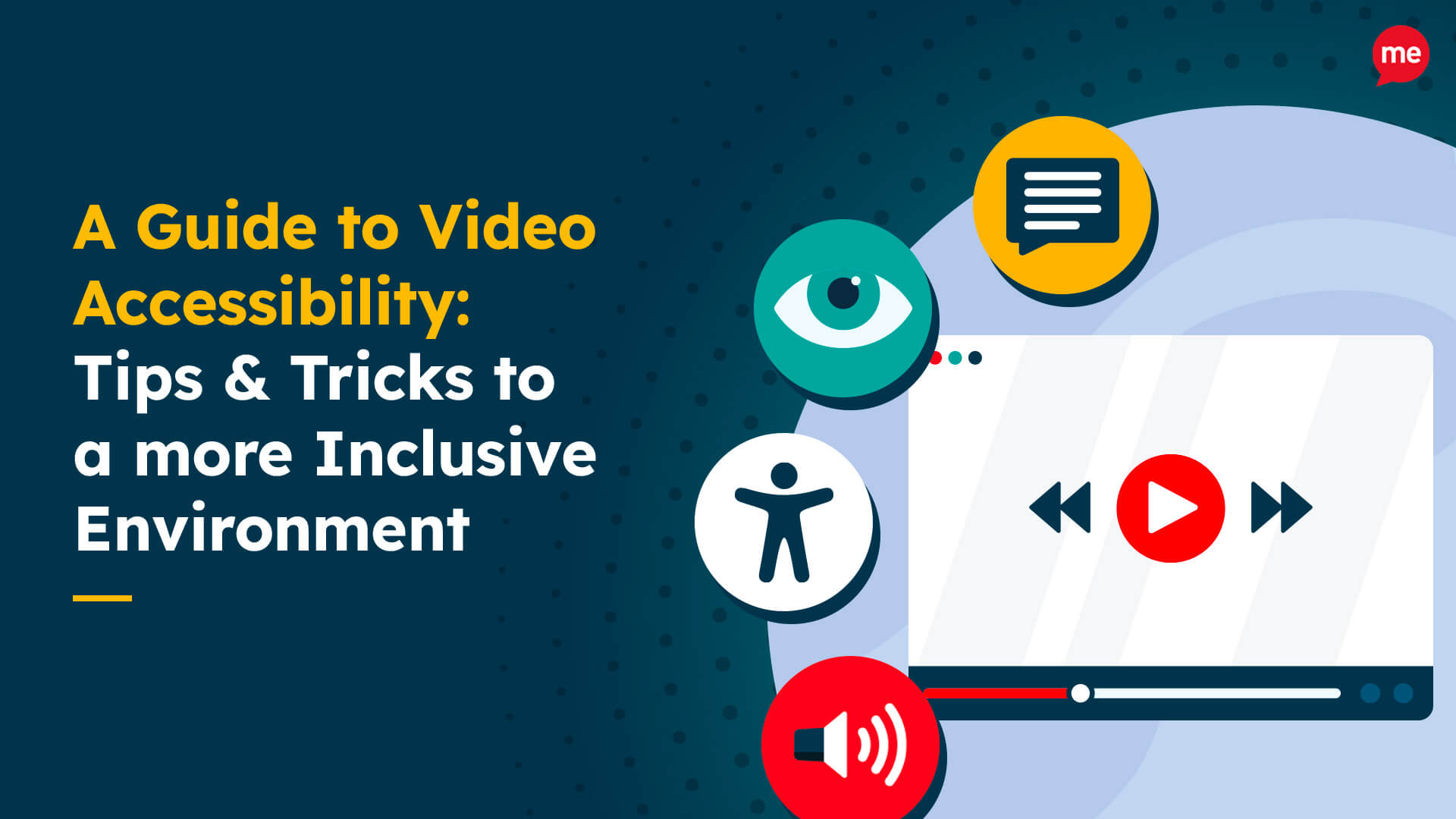The whole point of having a company website is to showcase your products and services to as wide an audience as possible. So why not make your website accessible and inclusive to as many people as you can? After all, the internet is a daily fixture in most people’s lives. So much so, that recent studies show the average person in the UK spends anything up to a whole day online every week. That’s one in every seven hours of our lives spent on the internet!
Virtually everything we do requires us to spend time online, whether it’s banking, paying bills, shopping, reading the news, or booking a holiday. So it is vitally important that websites are not just accessible, but usable by all. Everyone should have the opportunity to be able to access online content, yet there are over one billion people globally who face barriers when visiting inaccessible websites.
“The one argument for accessibility that doesn’t get made nearly often enough is how extraordinarily better it makes some people’s lives. How many opportunities do we have to dramatically improve people’s lives just by doing our job a little better?”
Steve Krug, a prominent website user experience expert.
Recite Me assistive technology provides your customers with the online tools they need to understand and engage with your products and services. It also allows you to support people who are neurodiverse, visually impaired, speak English as a second language, or are of old age. So using our software isn’t just the smart thing to do, it’s the right thing to do. Here’s why…
 2 Million People in the UK Have a Visual Impairment
2 Million People in the UK Have a Visual Impairment
The term ‘visual impairment’ covers a whole range of issues including partial blindness, deafblindness, and colour blindness. For those who suffer from any of these conditions, accessing information online is much more difficult, whether due to the size and font used, the layout of the text, the colour of the text, or the colour contrast between the text and the background.
 15% of the UK Population has a Learning Difficulty
15% of the UK Population has a Learning Difficulty
The most common learning disability in the UK is Dyslexia, which affects at least 10% of the population and impacts many levels of comprehension including reading, writing, and spelling.
ADHD is the second most common learning disability, and is a hyperactivity and attention disorder. Those with ADHD will typically have problems focusing. Other learning difficulties include Hyperlexia and Dyspraxia. Hyperlexics can read words but not necessarily understand their meaning, while Dyspraxics often have language problems and experience a certain degree of difficulty with thought and perception.
 One in Ten People in the UK Speak English as a Second Language
One in Ten People in the UK Speak English as a Second Language
While many of us may speak a second language, most of us would default back to our mother tongue to research and communicate online. Even something seemingly simple like finding contact details to email a company or call a customer service or sales helpline can be extremely difficult when you have to navigate a website in a second language. Not to mention more complex tasks like researching financial options, shopping online, using booking sites, or filling in online forms and applications.
 One in Five People in the UK has a Disability
One in Five People in the UK has a Disability
Disabilities come in many forms. The stereotype of a disabled person is typically someone who is physically impaired or wheelchair-bound, and most companies tend not to think of this affecting online access. In reality, however, the term covers a whole range of mobility and cognitive issues. For example, someone with a physical mobility problem in their upper body may be a keyboard-only user, whereas someone with epilepsy may not be able to access sites with media or graphics that could cause a seizure.
 11.8 Million UK Residents Are Aged 65 and Over
11.8 Million UK Residents Are Aged 65 and Over
The internet is an important tool in assisting older people to lead independent lives. As the ageing population increases, so does the percentage of the entire population with disabilities and visual impairments. So more accessible websites are required to reach this part of the community so that the elderly do not become excluded online or miss out on valuable information and services.
 1 in 6 Adults are Affected by Hearing Loss
1 in 6 Adults are Affected by Hearing Loss
This means that one in six consumers are predominantly reliant on the internet rather than a face to face or telephone conversation to access the information, products, services, and assistance they need. Couple this with the fact that many who suffer from hearing loss may also be older, disabled, speak English as a second language, or suffer with a learning difficulty and the need for having more accessible websites becomes even clearer.
How Does Recite Me Assistive Technology Cater to All Accessibility Needs?
Recite Me assistive technology gives users the ability to fully customise the look of a website for personal ease of use. Our toolbar comprises a number of accessibility features that can be used individually or combined to make multiple adjustments and therefore account for all access barriers:
- Personalisation for font size, type, spacing, and colour.
- Options to change the colour contrast between text and background.
- A screen mask to provide colour tinting and block visual clutter.
- A “text-only” mode that strips away any media and/or graphics and allows users to reposition text on the screen.
- Additional reading aids such as an on-screen ruler.
- A language converter that can translate text into over 100 different on-screen languages.
- Options to download content as an audio file.
- Text can be read aloud at different speeds with either a male or a female voice.
- Text-to-speech functions in 35 languages.
- A built-in dictionary and thesaurus to check word definitions.
What Have You Got to Lose?
In short, nothing! The initial investment will likely be negligible when you consider all of the gains:
- The ability to reach a wider audience – 71% of users leave a site that they find hard to use, and 83% of people with access needs limit their shopping to sites that they know are accessible.
- Increased traffic and sales conversions – 86% of users with access needs would spend more if there were fewer barriers, and the online spending power of people with access needs in the UK is £24.8 billion.
- An enhanced brand image and reputation – stand out from your competition by demonstrating social responsibility through being inclusive.
- Fewer legal implications – it is expected by law that businesses and service providers do not treat disabled people less favourably.
So really, the question is why wouldn’t you want to make your website accessible and inclusive, rather than why you would.
Want to Know More?
To date we have installed our software on over 3500 websites across various industry sectors, so we have the knowledge and experience needed to guide you through the process and make your transition towards inclusion a seamless one.
Contact our team today for further information and to learn more about how to provide an inclusive and custom experience for your website users. You can also book a demonstration of our toolbar.






